Do Not Disturb While Driving (DNDWD) in 2025
Awareness and adoption grow, but resistance remains

The Do Not Disturb While Driving (DNDWD) feature has been helping drivers stay focused behind the wheel for nearly a decade. Built into iOS and Android, it automatically silences notifications when driving, making it one of the simplest and most effective tools to reduce distracted driving. Despite its potential, DNDWD still isn’t widely adopted. Drivers have to activate this opt-in feature. This raises questions about who’s using it, who’s not, and why.
To understand the broader trends around DNDWD, we’ve been surveying drivers about their use of it over the past 3 years. The 2025 results from over 1,000 drivers tell a mixed story of progress and setbacks. Awareness has reached a new high at 71%, but usage among younger drivers aged 18 to 29 has dropped 35% from last year. The challenge now is turning growing awareness into consistent use, especially among young drivers.
Here’s what the 2025 survey reveals.
Awareness reaches new highs, led by older drivers
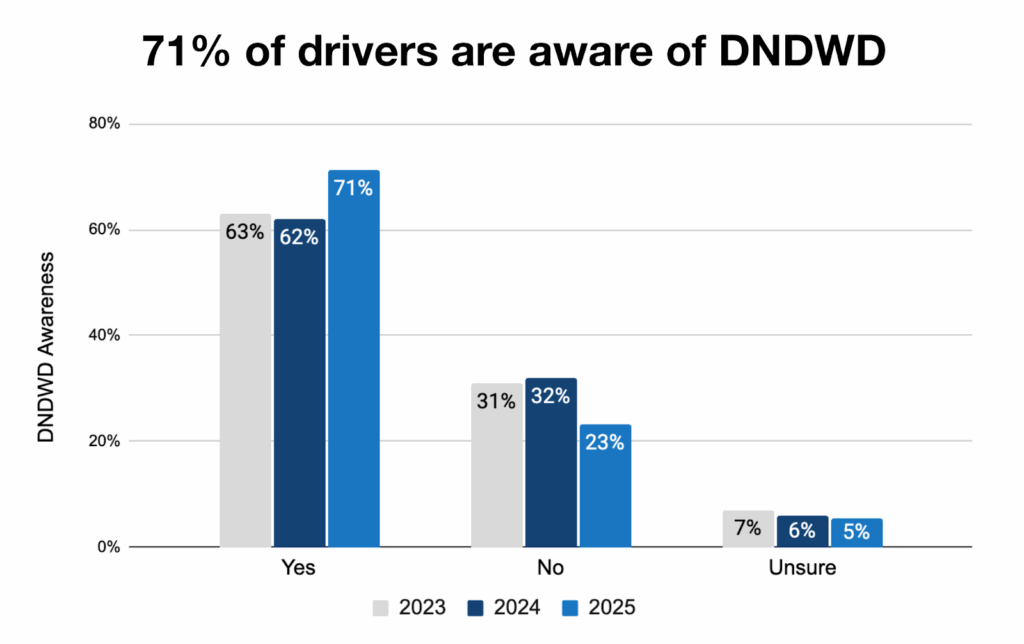
Awareness of DNDWD has climbed significantly over the past year. In 2024, 62% said they knew about the feature. In 2025, that number grew to 71% — a 15% increase.
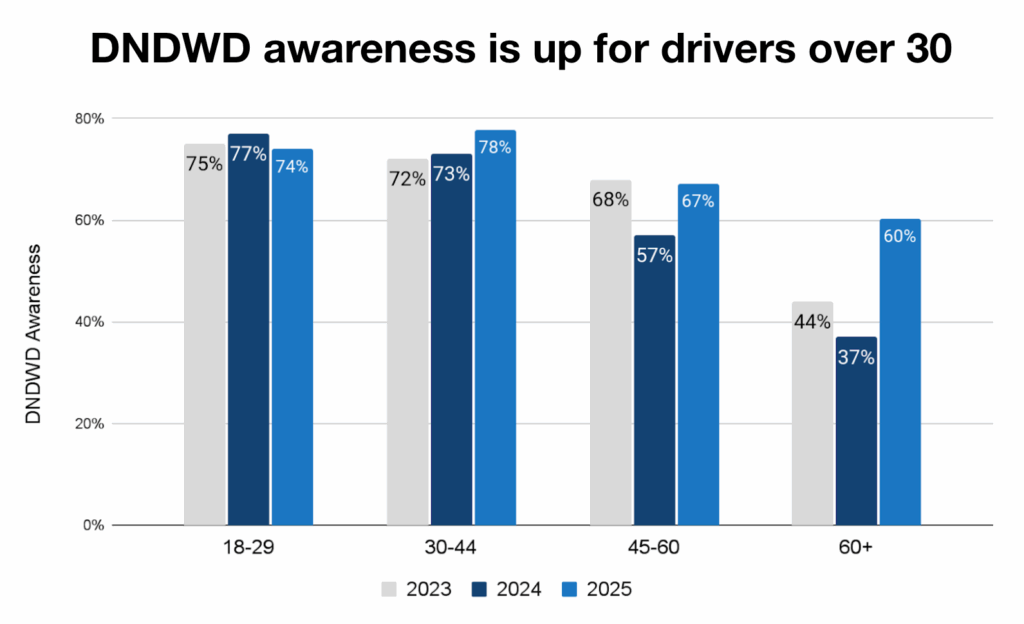
This surge in awareness is led by more experienced drivers. For the first time since CMT began DNDWD surveying, drivers aged 30 to 44 reported higher awareness than drivers aged 18 to 29. Among those in their thirties and early forties, 78% said they knew about the feature, up 6% from 2024. At the same time, awareness among younger drivers slipped 4%.
Older drivers saw even bigger gains. Awareness among drivers aged 45 to 60 jumped 18% year over year, while awareness for drivers over 60 years old reported a remarkable 63% increase.
While awareness was once the primary reason for failing to activate DNDWD, it’s no longer the main barrier. In 2024, 80% of people said the reason they didn’t use the feature was simply because they didn’t know it existed. In 2025, that number fell to 35%.
Usage rises overall, but falls among young drivers
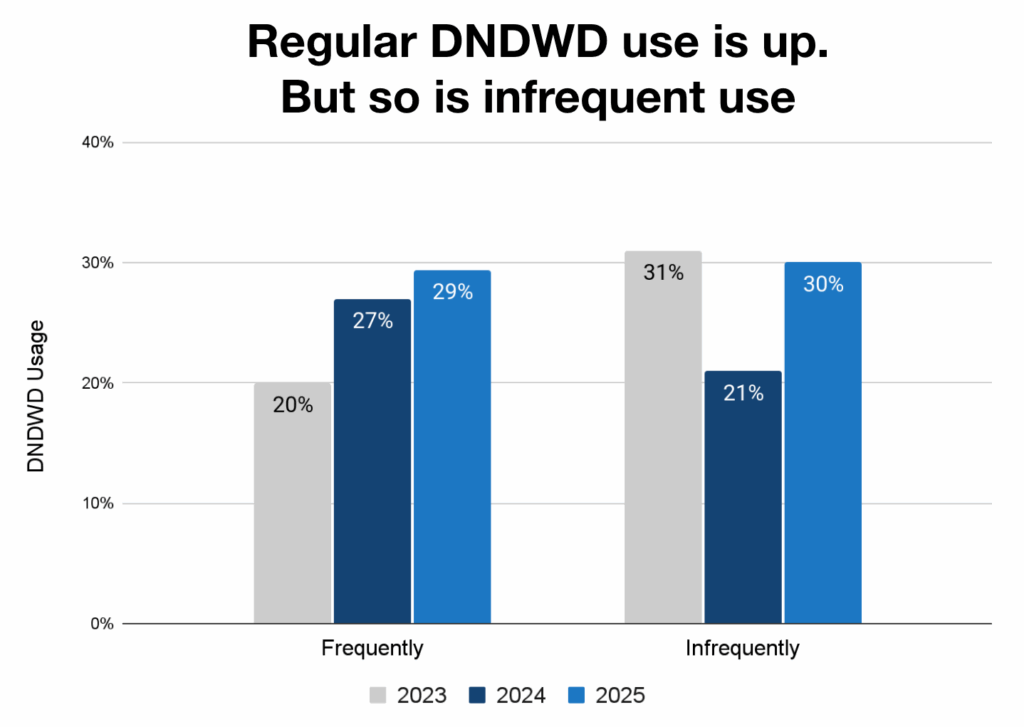
Despite rising awareness, adoption is growing slowly. In 2024, 27% of drivers reported regularly using DNDWD, a 26% jump from the year before. In 2025, usage rose slightly to 29% — a 9% increase. Meanwhile, the share of drivers who never use, or rarely use, the feature climbed from 21% to 30%. This suggests that drivers who know about DNDWD are likely still hesitant to activate the feature.
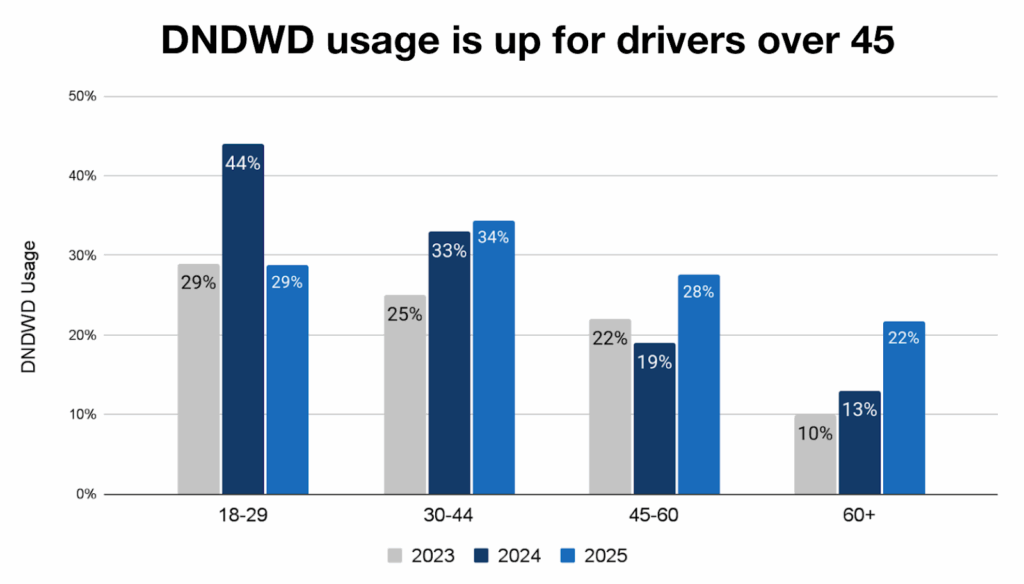
The age breakdown also reveals a striking shift. In short, younger drivers are disengaging while older drivers are embracing the feature more. Usage among drivers aged 18 to 29 dropped 35% year over year, returning to its 2023 rate of 29%. This reversal suggests that last year’s surge was temporary rather than part of a lasting trend. Usage among drivers aged 30 to 44 remained steady while adoption among older drivers grew significantly. Drivers aged 45 to 60 increased their usage by 45%, while drivers over 60 boosted their usage by 67%.
Android users surpass iOS in DNDWD adoption
Most drivers continue to learn about DNDWD through their phone settings or notifications. This has been the case for 60% of drivers every year since 2023, with friends, family, and online resources playing secondary roles. But a closer look shows a turn taking place between platforms.
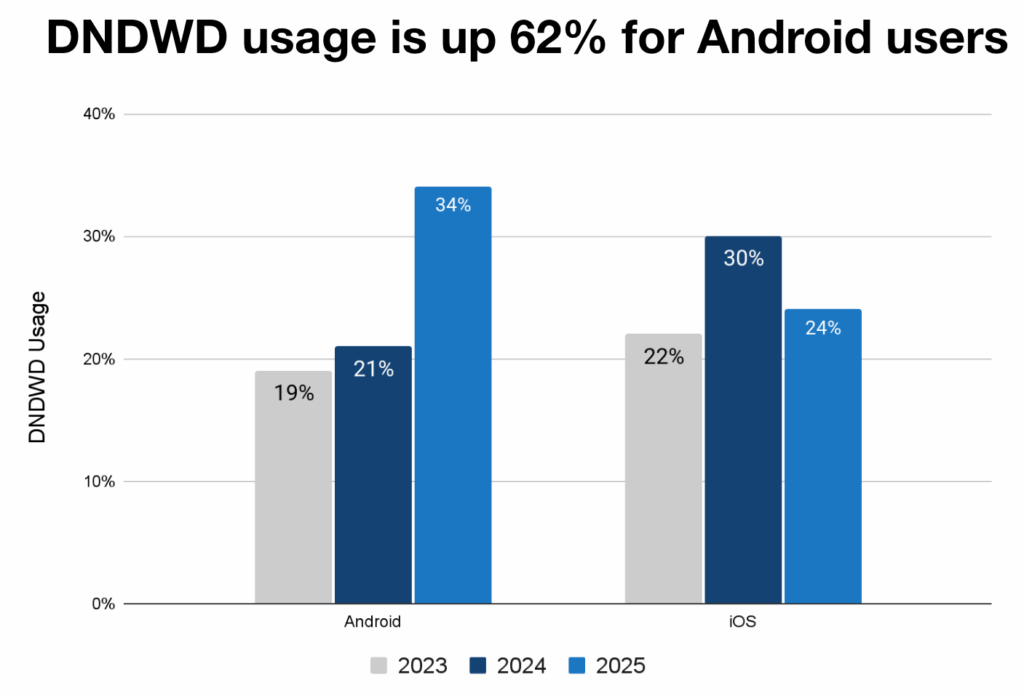
For the first time, Android has pulled ahead of iOS in DNDWD adoption. In 2025, 34% of Android users reported using DNDWD frequently, a 62% increase from the year before. Conversely, 24% of iOS users said they frequently use the feature, a 20% drop from 2024. These shifts suggest that Android’s evolving approach to DNDWD, through system-level controls and driving modes, is resonating with more drivers.
Hands-free laws boost motivation
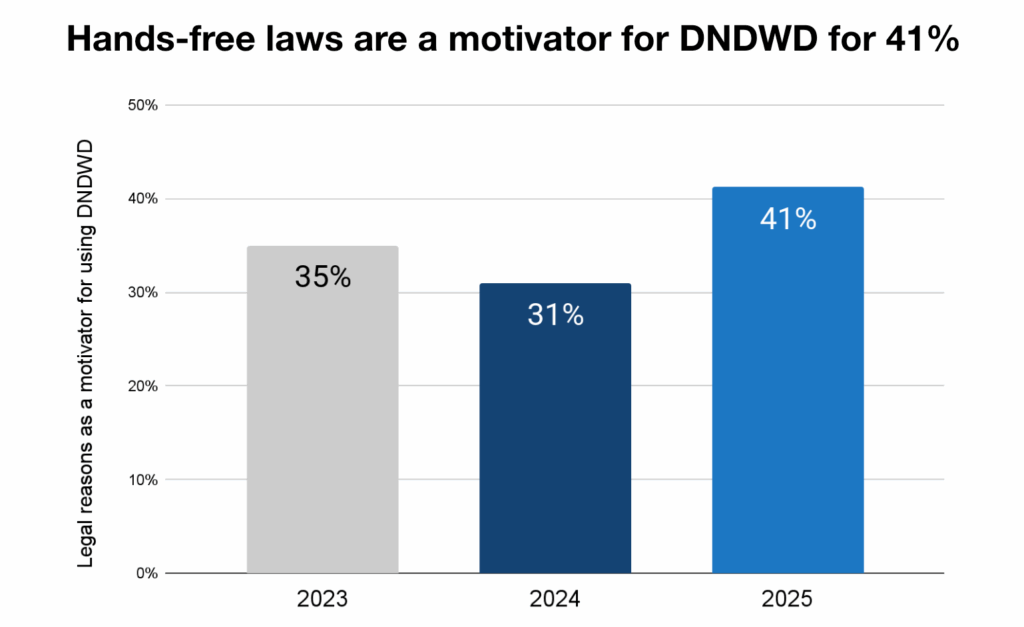
When asked why they use DNDWD, drivers consistently point to safety as their top motivation — a steady pattern over the last three years. However, State laws are also influencing drivers’ actions. In 2025, the number of drivers citing hands-free laws as a motivating factor rose by 33%, increasing from 31% in 2024 to 41% in 2025. With 31 states now enforcing hands-free laws — including new or updated legislation in 2025 in Colorado, Pennsylvania, Iowa, and Louisiana — the impact of hands-free laws on driver behavior is growing fast.
Users believe in the effectiveness of DNDWD
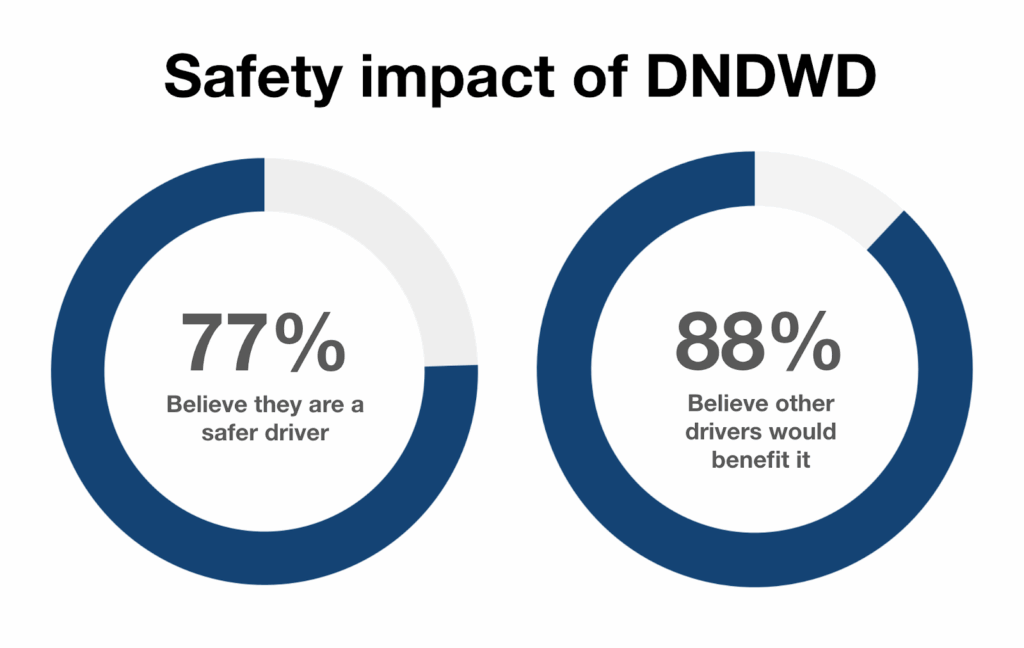
Drivers who use DNDWD share a universal belief — DNDWD is a genuine safety tool that reduces risk for both themselves and their communities. 77% say DNDWD makes them safer, and 88% believe the roads would be safer if more drivers activated it.
Resistance remains among non-users
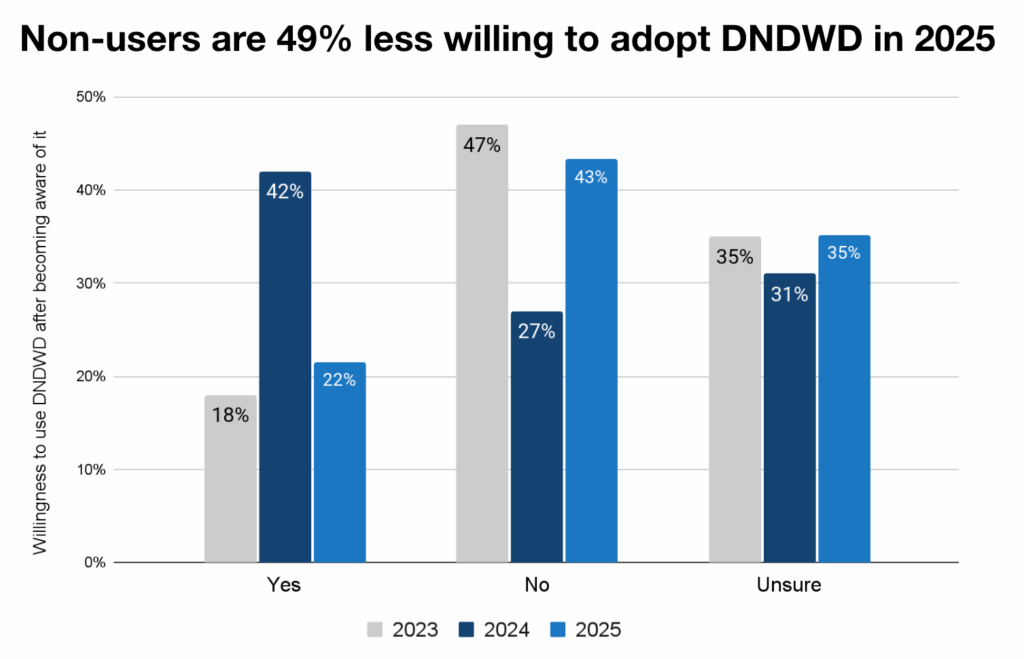
Despite higher awareness and strong satisfaction among users, a strong resistance persists that continues to limit broader adoption. Among drivers who only recently became aware of the feature, just 22% said they plan to use it, a 49% drop compared to last year. Meanwhile, the share of drivers who say they still won’t use it rose by 60%. Their reasoning? Concerns about missing important calls or messages, believing the feature is unnecessary, and finding activation inconvenient.
What’s important to know is that DNDWD is simple to activate. On iPhones, it can be found under Settings > Focus > Driving or quickly enabled in Control Center. On Android devices, it’s found in Digital Wellbeing or available as a Driving Mode toggle in Quick Settings. Drivers can also allow calls from key contacts and customize auto-replies, helping ease some of the common concerns.
Looking Ahead
In 2025, Do Not Disturb While Driving stands at a crossroads. Awareness is at record highs, and older drivers are adopting it. But younger drivers are turning away, and resistance among new users has grown. Overcoming common objections will require a continued push from road safety advocates, tech providers, insurers, and other safety stakeholders. With stronger promotion emphasizing ease of use, customization, and peace of mind on the road, DNDWD can deliver on its promise of safer roads for everyone.